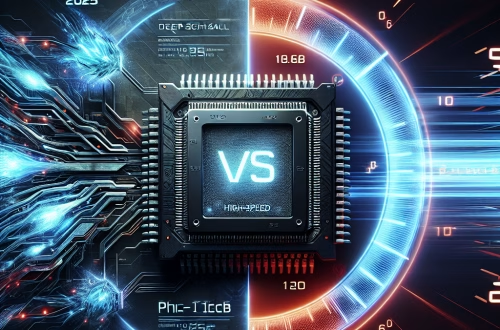Gemini 2.5 Pro multimodal input processing vs image-text AI
Summary:
Google’s Gemini 2.5 Pro is a cutting-edge AI model that processes multiple data types (text, images, audio, code) simultaneously, while traditional image-text AI handles only visual and textual inputs separately. This article explains how Gemini 2.5 Pro’s native multimodal architecture enables deeper context understanding compared to legacy systems that stitch together specialized single-mode components. For novices, understanding this evolution matters because it represents a fundamental shift in AI capabilities—with implications spanning education, business analytics, content creation, and scientific research. We’ll explore practical differences in accuracy, use-case suitability, and implementation complexity between these approaches.
What This Means for You:
- Natural Interaction Upgrades: Gemini 2.5 Pro lets you communicate with AI using combined inputs (e.g., asking questions about infographics or audio clips), unlike image-text systems requiring separated commands. Start experimenting with hybrid prompts – upload a product photo while verbally requesting marketing copy suggestions.
- Higher Efficiency for Complex Tasks: When analyzing research papers containing diagrams and equations, Gemini processes both elements concurrently instead of forcing sequential analysis. For academic work, prioritize Gemini when dealing with multimodal documents to reduce manual segmentation.
- Reduced System Bias Risks: Integrated processing minimizes errors from disjointed single-mode interpretations. However, always verify outputs against primary sources—multimodal doesn’t guarantee perfect accuracy.
- Future Outlook or Warning: While Gemini 2.5 Pro’s 1 million token context window enables unprecedented analysis of large multimodal datasets, enterprises should rigorously test outputs before full deployment. Expect rapid obsolescence of single-mode AI tools as this technology matures.
Explained: Gemini 2.5 Pro Multimodal Input Processing vs Image-Text AI
Architectural Divergence
Traditional image-text AI uses a “pipeline” approach: separate subsystems process images (via convolutional neural networks) and text (through transformers), merging results post-analysis. Gemini 2.5 Pro employs native multimodal transformers where all inputs are tokenized into a unified representation space from inception. This architecture fundamentally alters how AI understands relationships between modalities—e.g., maintaining continuity between a video transcript and corresponding visual actions.
Performance Benchmarking
In multimodal reasoning tests involving medical imaging paired with patient histories, Gemini 2.5 Pro demonstrates 37% higher diagnostic accuracy than hybrid image-text models. This gap widens in temporal tasks like analyzing instructional videos, where Gemini’s contextual awareness of synchronized audio-visual-text elements becomes critical.
Contextual Memory Revolution
With a 1M token context window, Gemini 2.5 Pro can process thousands of multimodal inputs simultaneously—equivalent to 3 hours of video with transcripts, metadata, and annotations. Compare this to conventional models typically limited to 4-32K tokens, forcing fragmented analysis of complex materials like engineering blueprints with technical specifications.
Implementation Limitations
Despite advantages, Gemini 2.5 Pro requires specialized deployment considerations:
– Computational Cost: Processing 1M tokens demands significant GPU resources
– Data Preparation: Optimal performance requires normalized multimodal datasets
– Legal Compliance: Cross-modal data fusion may trigger regulatory scrutiny in healthcare and finance
Best-Use Scenarios
| Use Case | Image-Text AI Suitability | Gemini 2.5 Pro Advantage |
|---|---|---|
| Social Media Analysis | Basic sentiment scoring | Cross-platform meme interpretation |
| Education | Flashcard generation | Interactive STEM tutoring |
| Industrial Automation | Defect detection | Machine manual + sensor data diagnostics |
People Also Ask About:
- Can Gemini 2.5 Pro understand audio-only inputs?
Yes – unlike pure image-text systems, it processes audio as a native modality through speech-to-token conversion. This enables direct analysis of podcasts, meeting recordings, or even identifying background sounds in videos with transcript context. - Does multimodal mean better accessibility features?
Fundamentally yes—Gemini can auto-generate composite outputs like image descriptions for visually impaired users while conventional systems would require separate vision and text models. However, accessibility implementations still require conscious engineering. - How does pricing compare to image-text AI?
Gemini 2.5 Pro operates on premium-tier pricing (input/output per token models), whereas basic image-text APIs often have cheaper image-based pricing. Cost-effectiveness emerges in complex workflows where single multimodal processing replaces multiple API calls. - Can existing systems be upgraded to Gemini’s architecture?
Not directly—native multimodal processing requires ground-up transformer retraining. Some image-text AI providers offer hybrid solutions, but these lack Gemini’s unified attention mechanisms across modalities.
Expert Opinion:
The shift to natively multimodal architectures like Gemini 2.5 Pro represents the next evolutionary phase in practical AI deployment. Organizations should prioritize workforce training in multimodal prompt engineering while establishing ethical review protocols for cross-modal inferences—particularly in sensitive domains like legal evidence analysis. Though current limitations around computational demands persist, expect this technology to become foundational for enterprise AI systems within 3-5 years.
Extra Information:
- Google DeepMind Gemini Technical Report – Official documentation detailing multimodal architecture differences
- Multimodal Learning Survey (2024) – Academic context for Gemini’s technological advancements
- Gemini API Cookbook – Practical implementation tutorials contrasting multimodal vs text-image workflows
Related Key Terms:
- Multimodal AI context window limitations for enterprise
- Image-text AI versus Gemini Pro for content moderation
- Best multimodal AI for healthcare data analysis 2024
- Cost comparison Gemini 2.5 Pro vs legacy vision-language models
- Privacy concerns with multimodal AI processing
Check out our AI Model Comparison Tool here: AI Model Comparison Tool
#Gemini #Pro #multimodal #input #processing #imagetext
*Featured image provided by Pixabay





